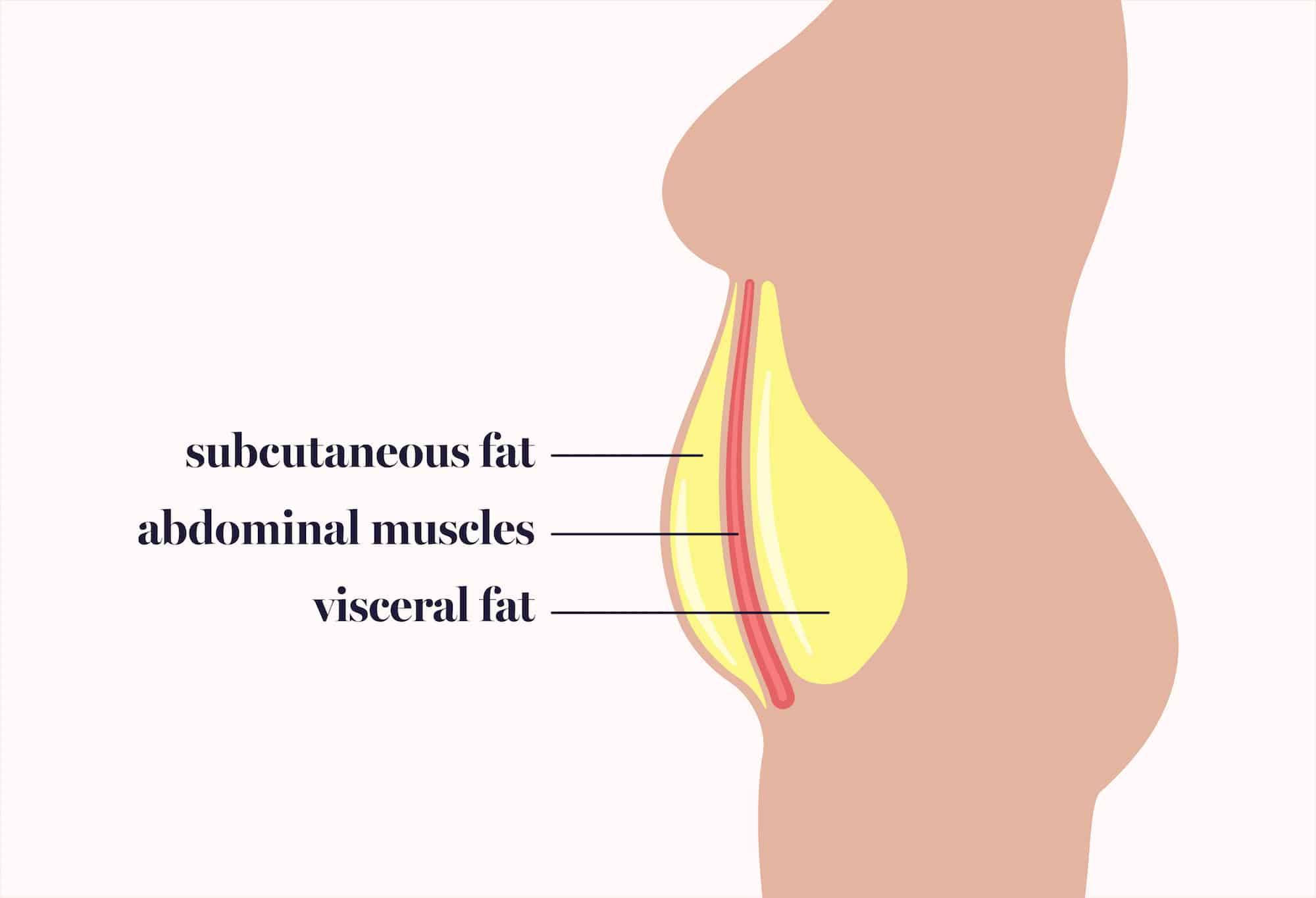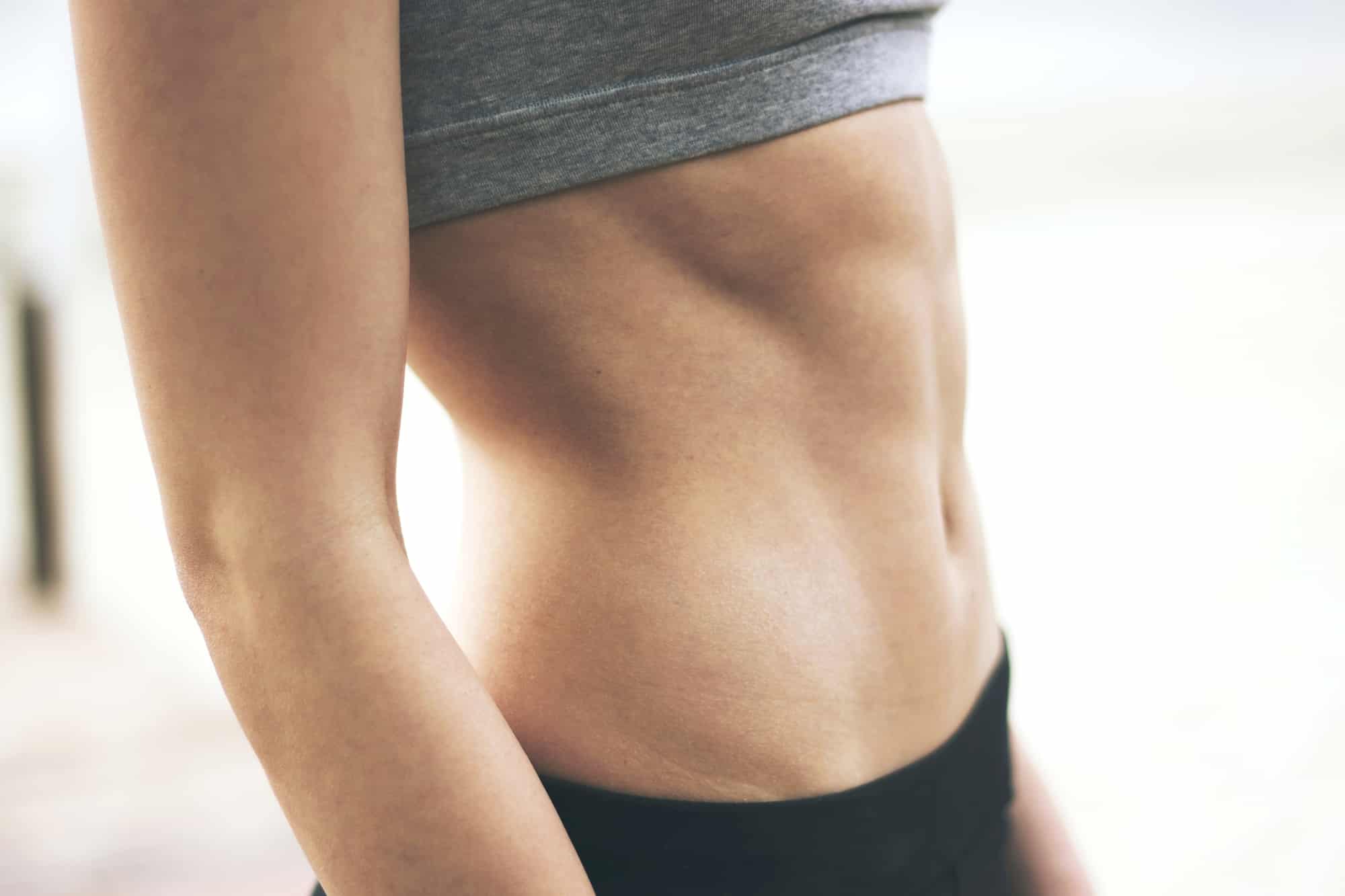Ten years into her practice as a board-certified plastic surgeon in Austin, Texas, Dr. Ashley Gordon noticed something unexpected about certain liposuction patients she’d “inherited” from older, retiring colleagues: They were slim overall, save for rock-hard belly fat.
“These were women who would have liposuction every couple of years,” she recalls. After repeatedly having fat removed from their arms, thighs, and flanks, these sexagenarians and septuagenarians were anything but flabby—yet their abdomens told another story. “They could barely pinch the skin on their belly—it was tense [and] firm and felt hard,” Dr. Gordon says. “I’d have to explain that it wasn’t fat on the outside, it was fat on the inside.”
Two types of body fat
Not all fat is the same. More important, the hard “inside” stuff nestling our organs behind the abdominal wall—what doctors call visceral fat—poses serious health risks. “Visceral fat is in your belly, and it’s located near several of the abdominal organs: the liver, stomach, and intestines,” says Dr. Grace Lee, a board-certified endocrinologist at Virginia Mason Medical Center in Seattle. And because it’s metabolically active—meaning it can affect systems throughout the body—too much of it can be life-threatening. “Visceral fat is associated with different disease states, such as heart disease, heart attacks, strokes, diabetes, and certain cancers, like breast and colon cancers,” says Dr. Lee.

Conversely, the soft and squishy stuff that makes butts and thighs jiggle is subcutaneous fat. “Subcutaneous fat isn’t associated with cardiovascular disease, but that’s the fat that’s more obvious to the patient,” says Dr. Lee. Liposuction and noninvasive fat removal technologies like CoolSculpting and WarmSculpting by SculpSure target stubborn pockets of subcutaneous fat that are resistant to diet and exercise.
Unintended consequences of liposuction
So if fat removal procedures target subcutaneous fat, where does visceral fat fit in? It turns out that removing subcutaneous fat—via liposuction, at least—may trigger a rebound-like increase in visceral fat. A 2012 study published in the Journal of Clinical Endocrinology & Metabolism followed 36 Brazilian women who had liposuction on their subcutaneous belly fat. All had been sedentary before the procedure; half were then instructed to begin a thrice-weekly exercise program, consisting of a 5-minute warmup, followed by 30 minutes of strength training and 30-40 minutes of treadmill-based cardio, after surgery.
Four months later, the women who hadn’t worked out still had flat abdomens, but they had gained an average of 10% more visceral fat. Meanwhile, the active group experienced no increase in visceral fat. The theory: the body may respond to superficial fat loss by growing visceral fat cells to compensate, but—and here’s the important part—regular exercise can check that biological counterbalance.
“Science has shown us that there’s a risk of increasing visceral fat, which obviously can hurt you more than subcutaneous fat,” says Dr. Z. Paul Lorenc, a board-certified plastic surgeon in New York City. “Those findings just support basically what we say clinically: If you don’t exercise, you’ll have a risk of increased visceral fat.” For his liposuction patients, he “prescribes” fluid-motion activities such as elliptical training at one week post-op, then exercising without restriction at two weeks. “Once I explain the difference between the subcutaneous fat and the visceral fat, of course they get it,” he says, adding that the procedure is often a strong fitness motivator. “A lot of patients use liposuction as a trigger to start a more regular regimen of exercise, because they want to retain the results,” he notes.
For fat-reduction patients, especially, exercise is essential because detecting visceral fat is so difficult. “Visceral fat is measured by doing either a CT or MRI scan,” Dr. Lee says, “but one generally doesn’t measure it on an outpatient basis.” Some studies, she notes, suggest that higher waistline measurements (for women, that’s 35 inches or larger; for men, 40 inches and up) are associated with increased visceral fat. But since liposuction patients are typically already slim, they’re less likely to have large waists—and the cost of CT and MRI scans can be prohibitive.
Related: 10 Doctors Give Their Best Liposuction Advice, in 10 Words or Less
What about noninvasive fat-reduction procedures?
So far, clinical research is limited regarding the liposuction–visceral fat connection—in part, because exercise seems to solve any possible problem. But if you ask Dr. Gordon, the issue warrants a closer look, particularly as noninvasive fat reduction procedures become more popular. The aforementioned liposuction study was conducted in 2012, she points out—before the momentous rise of nonsurgical fat squelchers. “I don’t think anybody’s really looked at visceral fat in patients who have had multiple rounds of CoolSculpting, for instance,” she says.
In theory, noninvasive procedures could pose similar risks. Dr. Lorenc notes that all types of fat removal—whether done surgically, with a cannula, or nonsurgically, with extreme temperatures—destroy fat cells. “It’s a different mechanism, but it’s still a removal of the cell,” he says. “Your body will clear it to the liver, and those cells don’t come back.”
The bottom line
If you’re considering fat-reduction, through either liposuction or noninvasive treatments, talk to your doctor about the risk of developing visceral fat following the procedure. Dr. Gordon recommends asking about the immediate risks and potential long-term complications—and recognizing that a successful outcome requires routine post-treatment exercise and an overall healthy lifestyle. “Many patients want the easy, quick get-out-of-jail-free card when it comes to fat,” she says, “but everything has its risks.”











